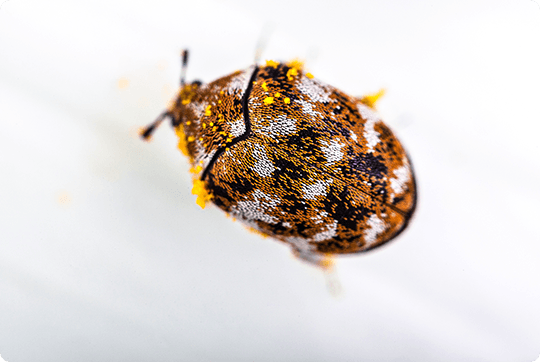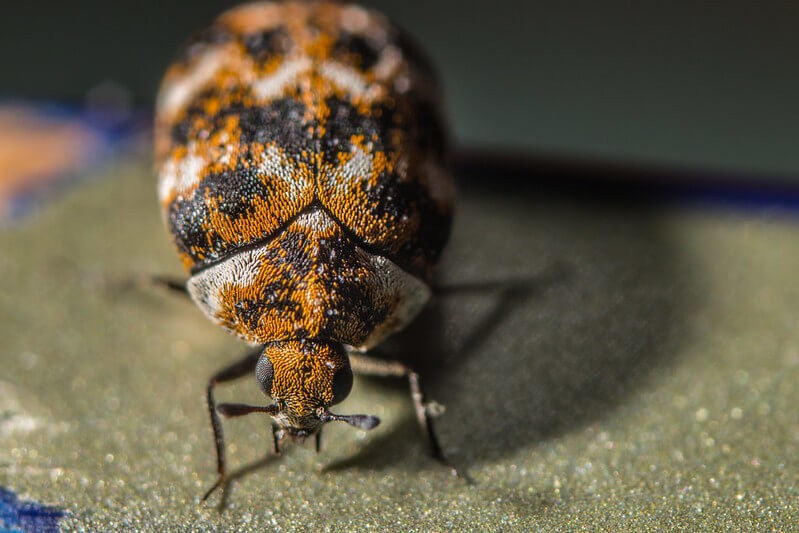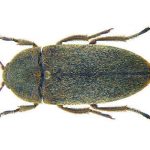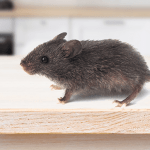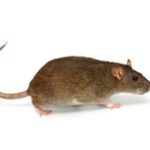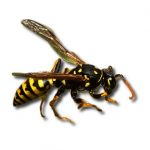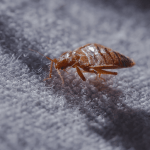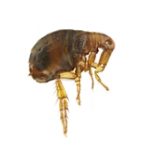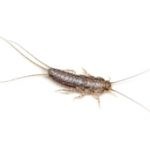Carpet Beetles in the UK: Identification, Risks, and Control
Carpet beetles are small flying insects from the Dermestidae family, often called leather beetles. In the UK, these pests are a growing concern not just for homes, but also for warehouses, museums, poultry houses, and even newly built properties. While adult carpet beetles feed on flower pollen outdoors, their larvae cause the real problems indoors. Carpet beetle larvae attack and damage natural fibres such as wool, leather, textiles, and fur, often causing irreparable damage. Recognising a carpet beetle infestation early is crucial to preventing costly damage to fabrics, furniture, and personal belongings.
Types of Carpet Beetles Common in the UK
There are several species of carpet beetles found across the UK, each with slightly different appearances, behaviours, and damage risks. Knowing how to identify them is crucial for effective carpet beetle control and prevention.
Varied Carpet Beetles (Anthrenus verbasci)
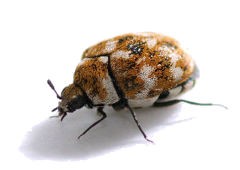
The varied carpet beetle is one of the most common and widespread pests in carpets globally, found on every continent except Australia and Antarctica. These tiny black carpet beetles measure around 3mm long and are easily identified by their irregular patterns of white and brownish-black transparent wings.
Their larvae, commonly referred to as “woolly bears,” are hairy, brown, and grow up to 5mm in length. Woolly bear larvae are especially destructive, feeding on wool, natural fibres, and soft furnishings around the home.
Signs of a varied carpet beetle infestation often include small holes in wool carpets, clothing, and upholstered furniture.
Image by: Jean-Raphaël Guillaumin
Fur Beetle (Attagenus pellio)
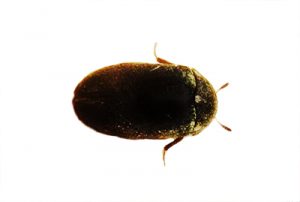
Fur beetles are another frequent carpet pest in UK homes. They are 4–6mm long, dark brown to black in colour, and have a distinctive white spot on each wing case. Due to their shape and colour, they are sometimes mistakenly identified as oriental cockroaches.
The larvae of fur beetles grow up to 6mm long and are covered with orange tufts of hair. They primarily feed on animal-based materials, particularly fur, and are often found in bird nests, which can act as sources of home infestations.
Image by: David Short
Leather Beetles (Dermestes maculatus)
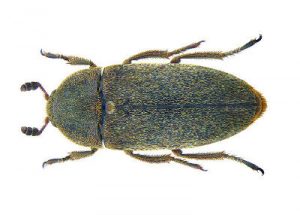
Leather beetles are larger members of the Dermestidae family, reaching 6–10mm in length. The adults have black-grey bodies and white bellies, while their hairy black larvae have a distinctive yellow “spine” running along their backs.
Larvae of the leather beetle can grow up to 12mm and are sometimes mistaken for moth larvae or butterfly caterpillars. As their name suggests, they prefer to feed on leather, hides, and animal remains and are commonly found in poultry houses or near stored organic materials.
Image by: Udo Schmidt
Check also:
Most common types of carpet beetles in the UK
Carpet Beetle Damage and How to Prevent It
Carpet beetle larvae are the real culprits when it comes to property damage. Feeding on animal-based materials, they cause significant deterioration in homes, offices, museums, and warehouses across the UK.
Common signs of carpet beetle infestation include small holes, irregular patches, and trail-like feeding patterns in fabrics and furnishings.
Here’s a list of materials most vulnerable to carpet beetle damage:
- Carpets and rugs made out of natural materials such as wool
- Leather sofas, chairs, and upholstered furniture
- Animal materials such as fur, feathers and even dried fish
- Leather bookbindings, especially in antique collections
- Photos and paintings that use organic adhesives or a natural canvas
Carpet beetle larvae feed primarily on dry proteins, making these natural materials prime targets. Unfortunately, many of these affected items, such as heirloom rugs or valuable leather-bound books, can be quite expensive to replace. Worse still, damage is often irreversible once it starts.
It’s also important to note that in the UK, legal rental agreements typically don’t cover carpet beetle infestations under standard insurance policies, leaving tenants and homeowners to handle prevention and treatment themselves.
Pro Tip: The best way to protect your belongings from costly carpet beetle damage is through early detection, regular cleaning, and targeted pest control measures.
Need pest control service?
Book your carpet beetle treatment with certified exterminator.
Call us
Diet and Habits of Carpet Beetles
Carpet beetles earned their name because their larvae feed on carpets, rugs, and natural fibres found in homes and buildings. However, adult carpet beetles have a very different diet, they primarily consume pollen and nectar and act as pollinators for a variety of flowers.
Interestingly, these beetles are also highly attracted to light and will often be seen near windows or lamps at night, a common sign of a carpet beetle infestation in its early stages. Some species have even been observed boring through lead and hiding in abandoned spider webs – rare behaviours in the insect world. If given the opportunity, carpet beetles can also settle in empty bee or wasp nests, using them as protected breeding grounds.
In the UK, carpet beetles typically emerge in spring and summer, when indoor temperatures rise and daylight hours increase. If you’re wondering, “What time of the year do carpet beetles come out?”, this seasonal activity makes sense, it coincides with their peak breeding cycle and increased flight activity.
Regarding reproduction, carpet beetles reproduce once or twice per year, depending on environmental conditions. A single female can lay up to 150 eggs, typically in secluded, undisturbed areas rich in organic material. It takes around two weeks for carpet beetle eggs to hatchto hatch, releasing larvae that immediately begin feeding.
Depending on the temperature and humidity, it can take larvae anywhere from several months up to two years to develop into adults. This extended larval stage means that, if left undetected, carpet beetle larvae can quietly cause serious damage to textiles, leather items, and soft furnishings for more than a year before they mature.
Quick Fact: Warmer, centrally-heated homes speed up the carpet beetle’s lifecycle, making infestations harder to control if early action isn’t taken.
How to Control and Manage Carpet Beetles?
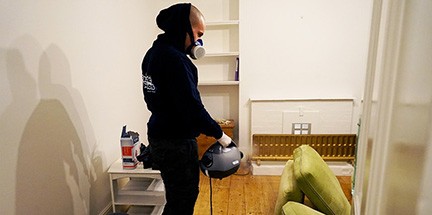 Controlling a carpet beetle infestations can be challenging, mainly because their food sources – textiles and leather are abundant in almost every home. Unlike other common pests, carpet beetles often go unnoticed until they have already caused significant damage.
Controlling a carpet beetle infestations can be challenging, mainly because their food sources – textiles and leather are abundant in almost every home. Unlike other common pests, carpet beetles often go unnoticed until they have already caused significant damage.
The best way to prevent carpet beetle infestations is to maintain a high level of hygiene. Regular vacuuming, steam cleaning carpets and upholstery, and removing dust, lint, and hair can help eliminate materials that attract larvae.
Steam cleaning is particularly effective, as it kills not only the larvae but also the eggs without the use of chemicals. A common question is, “Does vacuuming remove carpet beetle eggs?” While regular vacuuming helps reduce larvae and adult beetles, eggs can be hidden deep in fibres, so combining vacuuming with steam cleaning is far more effective at disrupting the life cycle.
Tip: Pay extra attention to hidden areas like under furniture, inside vents, and around carpet edges.
Some over-the-counter products are marketed as “protective sprays against carpet beetles.” However, it’s crucial to use them carefully. These sprays can potentially damage leather items and delicate wool carpets. As an alternative, moth crystals can serve as an effective repellent for carpet beetles without directly harming textiles.
In the case of a heavy infestation, you may need to resort to insecticide treatments. Focus your spraying efforts on the edges of carpets, along baseboards, and into cracks, vents, and crevices where carpet beetle larvae hide.
Important: If larvae burrow deep into upholstered furniture, mattresses, or pillows, it’s best to seek professional carpet beetle pest control services to ensure a complete eradication.






 Controlling a
Controlling a 